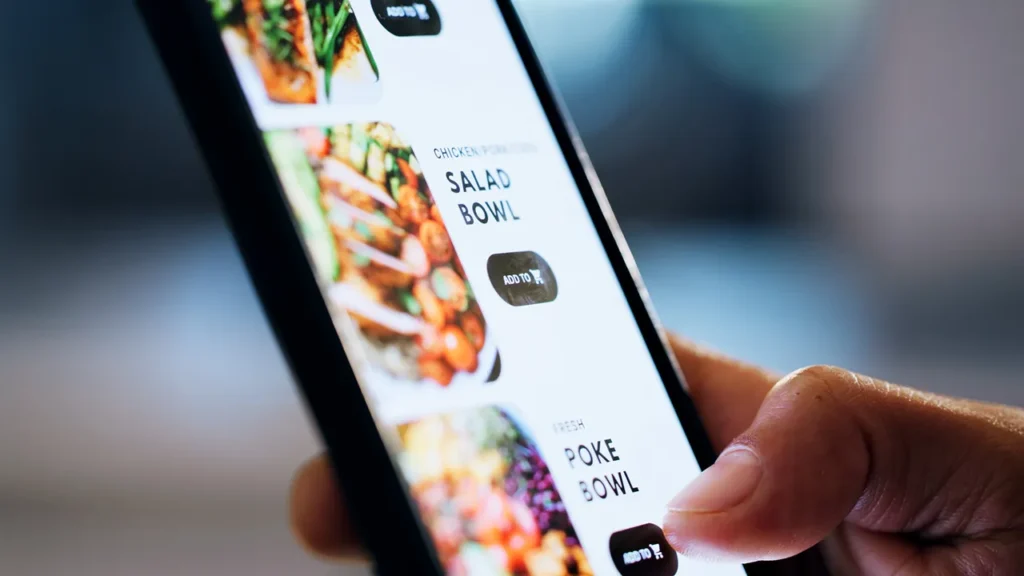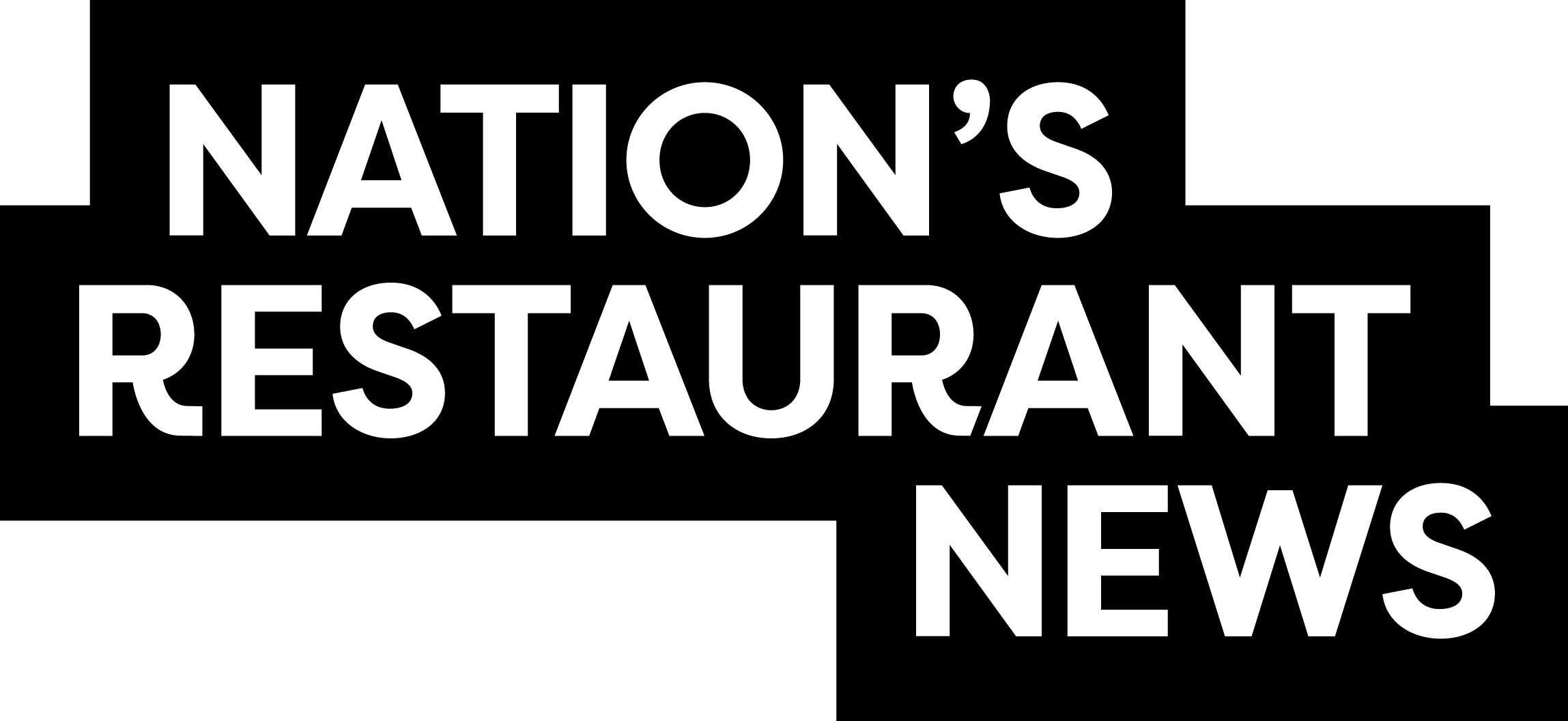Two decades of digital:
What's next for restaurant technology
A look behind at how far tech in the foodservice industry has come
— and where it goes from here
23 August 2025
Share this exclusive content from Saladplate

Photo Credit: Getty Images
Twenty years ago, my grandmother did something that would change my life — and ultimately yours as well. She sent a text message placing her coffee order to Koffee Too, a small café in New Haven, Conn., the first “mobile order” through Olo (then called Mobo). It was 2005, smartphones were still years away, and the idea of ordering food through a screen seemed almost futuristic. Her text message became one of the first digital restaurant orders and it planted a seed that would grow into decades of relentless innovation in restaurant technology.
Olo was born from a desire for convenience, being able to order ahead, pay ahead, and Skip the Line to get my coffee faster on my morning commute. What I didn’t realize then was that this simple concept of convenience would become a driving force that transformed not just my morning routine, but an entire industry. As we celebrate 20 years since our first order, I find myself reflecting on just how dramatically the restaurant landscape has transformed over the years to meet this calling — and more importantly, where we’re headed next.
The past 20 years
The restaurant industry’s digital transformation didn’t happen overnight. Over the course of the last two decades, we’ve witnessed gradual but significant changes in both back- and front-of-house operations that’ve streamlined processes, optimized labor efficiency, driven revenue growth, and enhanced the guest experience.
For example, kitchen display systems revolutionized how orders flowed through restaurants, eliminating the chaos of paper tickets, streamlining communication between front and back-of-house, and dramatically improving order accuracy and kitchen throughput. In the front-of-house, reservation systems evolved from handwritten books to sophisticated management platforms that could predict wait times, optimize seating arrangements, and even track guest preferences.
Isn’t it amazing how seamlessly these technologies have integrated into the dining experience? The best innovations were the ones guests never noticed — they simply made everything work better.
The pandemic: Digital becomes essential
Then came 2020, and everything changed overnight. The global pandemic didn’t just accelerate digital adoption in restaurants; it made digital a matter of survival. Off-premises ordering, which had been growing steadily, suddenly became an essential revenue stream and a lifeline for restaurants worldwide.
The industry adapted with remarkable speed. Restaurants that had never offered digital ordering quickly implemented online systems. QR code menus replaced physical ones. Contactless payment became the norm. What had been a gradual digital transformation suddenly became an urgent necessity. But here’s what became clear during those challenging months: restaurants that had already embraced digital technology weren’t just treading water — they were thriving. They could pivot quickly, serve guests safely, and maintain relationships even when dining rooms sat empty.
The 18 percent
Today, we’re faced with a fascinating statistic that reveals both how far we’ve come and how much opportunity still lies ahead. According to recent data from Circana, digital orders represent just 18% of total restaurant sales. Let that sink in for a moment: After two decades of digital innovation and a global pandemic that forced digital adoption, 82% of restaurant transactions still happen without the benefit of digital insights.
This isn’t a failure — it’s an enormous opportunity. When I think about what’s possible when digital touches 100 percent of restaurant transactions, the potential is staggering.
The guest data revolution
Right now, 82% of non-digital transactions represent millions of anonymous guests — people whose preferences, habits, and loyalty remain invisible to the brands they frequent. One hundred percent digital unlocks the real transformation, which happens when restaurants can see every guest, understand every preference, and personalize every experience. This is what becomes possible when a digital payments solution enters the on-premises realm, collecting actionable data from every transaction, whether in-store or online.
Imagine a world where every transaction, whether ordered through an app, placed at a kiosk, or spoken to a cashier, contributes to a comprehensive understanding of each guest. It’s the difference between providing a generic level of service or knowing that Sarah prefers her latte with oat milk, that Marcus always orders extra sauce, or that the Johnson Family typically dines together on Sunday evenings.
This 360-degree view of guest behavior creates what we call a guest data flywheel. Better data enables more personalized experiences, which drive increased engagement and loyalty, which generates more data through more transactions, and the cycle continues. The result isn’t just better business metrics — it’s better hospitality. It’s why restaurants must prioritize unified technology platforms that collect and share valuable guest data, empowering them with the tools to make informed business decisions and improve the guest experience.
The next 20 years
As we look toward the next two decades, I’m energized by the possibilities that lie ahead. The first 20 years were about meeting guests where they are, from text message ordering to on-demand delivery and more. When I think about the next 20 years, it’s about knowing guests and making those guests feel known, through data-driven tools that personalize the guest experience and provide genuine hospitality.
While the next 20 years will bring innovations we haven’t yet imagined, the core principle will remain the same and it will be centered around data: the best restaurant technology makes dining better for everyone. For guests, it means more personalized, efficient, and enjoyable experiences linking them closer to the brands they love. For restaurant teams, it means better tools to deliver next-level service. For operators, it means deeper insights, improved efficiency, and stronger relationships with their communities.
The future is now
That text message my grandmother sent in 2005 seemed revolutionary at the time, but it was just the beginning. As I reflect back on how far the industry has come over the past 20 years and think about where we are today, I have two strong emotions: grateful and unsatisfied. Grateful for all of the incredible people that have worked to accelerate the industry’s digital transformation, and unsatisfied because we’re just at basecamp in this technology journey.
An important word that has been at the heart of our company for the last 20 years is Excelsior. It’s the Latin word for “ever upward” and couldn’t be more representative of where I think the restaurant industry is heading in these next 20 years.
AUTHOR BIO
Noah Glass is the Founder & CEO of Olo, a leading restaurant technology provider with ordering, payment, and guest engagement solutions that help brands increase orders, streamline operations, and improve the guest experience. He began working in the foodservice industry twenty years ago, serving as a cashier, server, bartender, and delivery driver. In 2005, Noah started Olo, where his work with mobile ordering pre-dates the iPhone. Today, over 750 restaurant brands trust Olo to grow their digital ordering and delivery programs, increase operational efficiency, and make every guest feel like a regular. Noah was named #1 on the 2020 Nation’s Restaurant News Power List and serves on the Board of Share Our Strength and the Board of Trustees for the Culinary Institute of America.

Source: Nation’s Restaurant News



